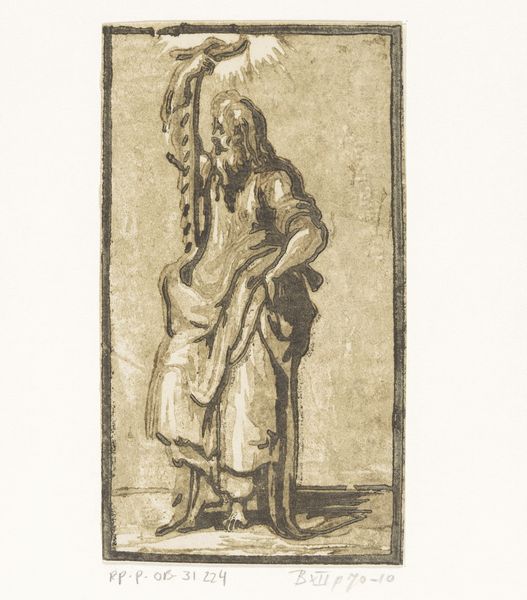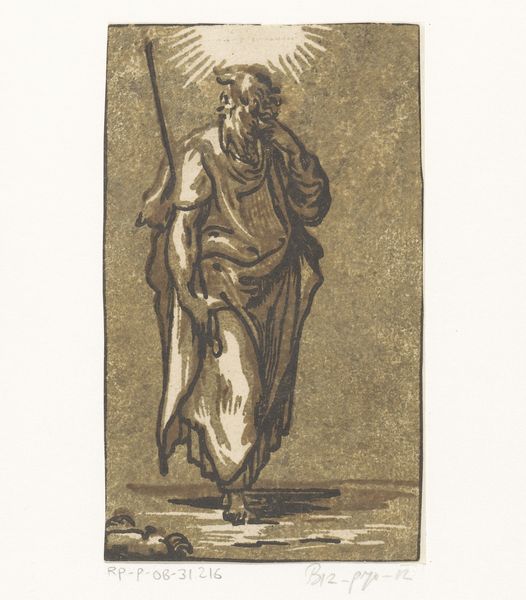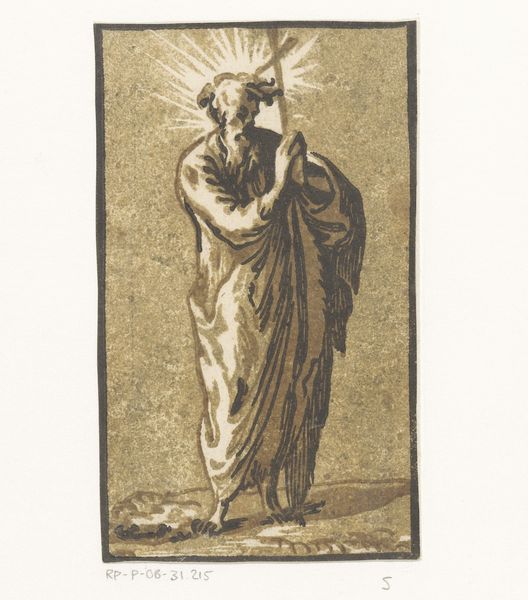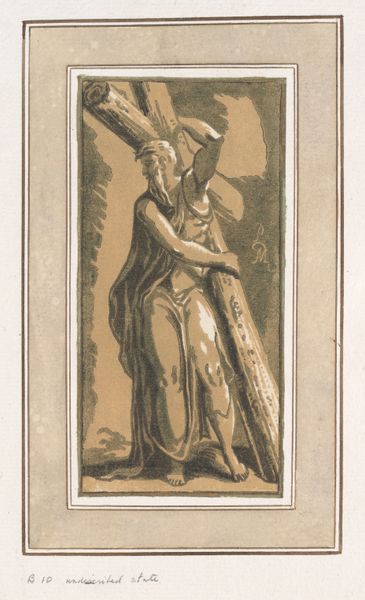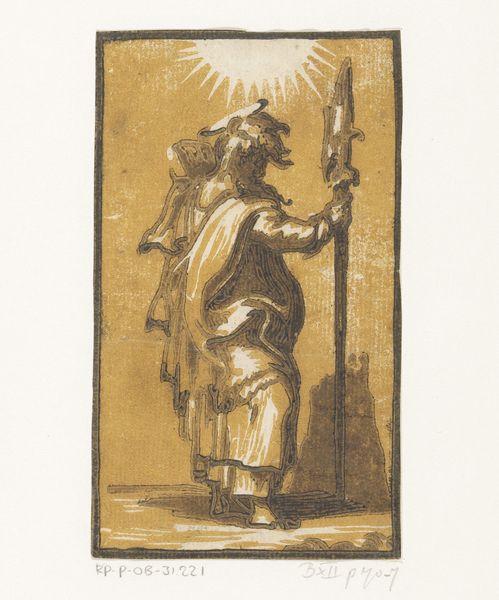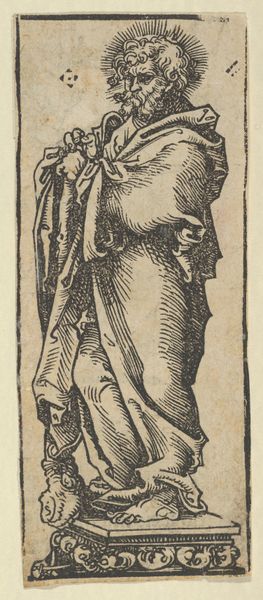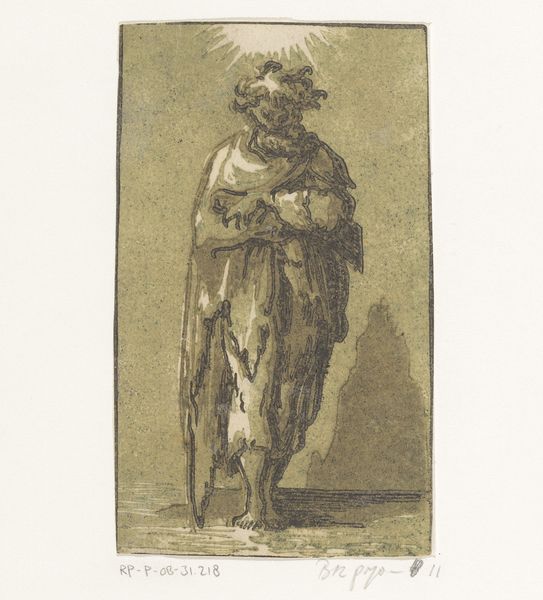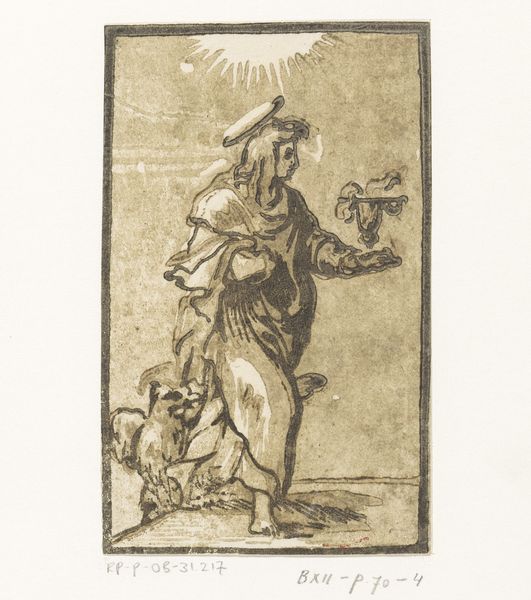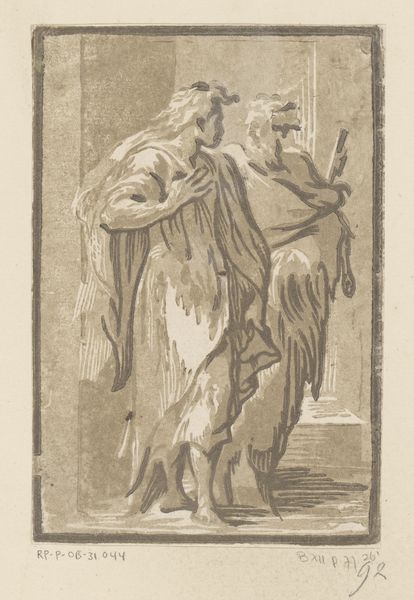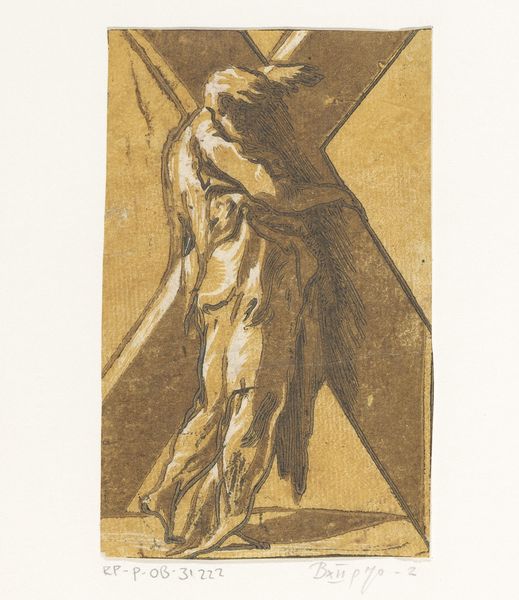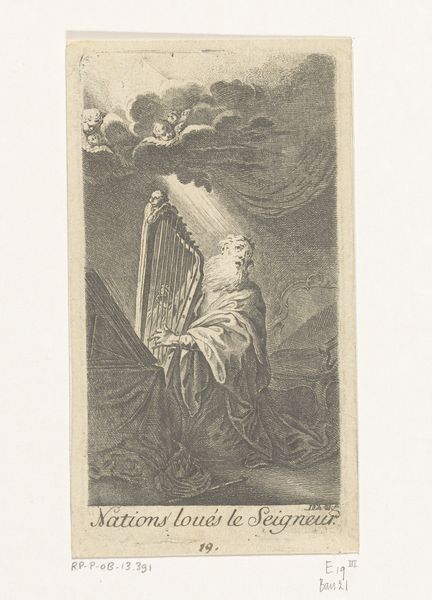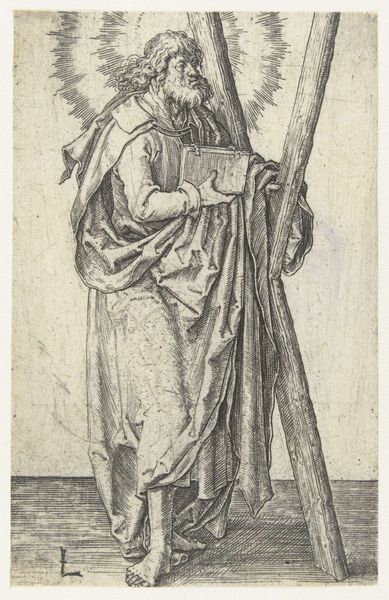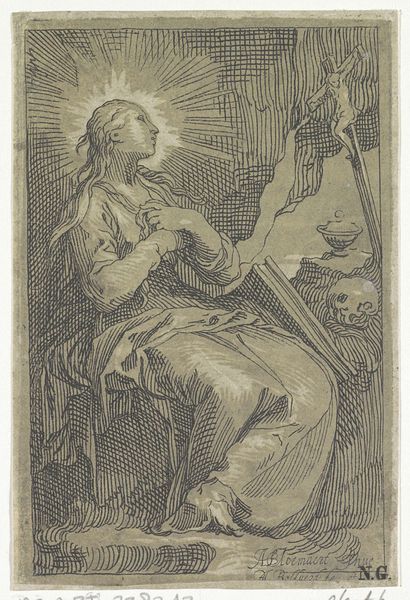
drawing, print, woodcut
#
portrait
#
drawing
# print
#
pencil sketch
#
mannerism
#
pencil drawing
#
woodcut
#
portrait drawing
Dimensions: height 123 mm, width 70 mm
Copyright: Rijks Museum: Open Domain
Curator: Let's turn our attention to this Mannerist woodcut, "Heilige Simon" by Antonio da Trento, dating from around 1520 to 1550. It depicts Saint Simon holding a saw aloft, his attribute. Editor: My immediate reaction is to the dramatic use of light. The saw, emanating almost celestial rays, against the more subdued tonality of Simon’s figure…it almost feels theatrical, no? Curator: Yes, the Mannerist style definitely plays into that sense of drama. Consider the elongated proportions of the figure, and the way the folds of his robe cascade. He’s not just standing; he’s presenting himself as a figure of immense spiritual authority. The saw, typically an instrument of martyrdom, is transformed here, becoming an almost transcendent symbol. Editor: It's intriguing to me how the object associated with violence and suffering is elevated—literally and figuratively. This could be seen in the context of the broader political and religious turbulence of the period; there were certainly societal anxieties regarding institutional structures. How might this elevation offer solace, or perhaps further inflame such anxieties? Curator: It reflects a prevailing interest in idealised forms. Look at other depictions of saints at the time, and notice the recurring motif of raising the tool of one's martyrdom, not as a weapon, but as an emblem. Think of Saint Peter with his keys, or Saint Catherine with her wheel; such iconographies are rooted in symbolic traditions passed down over many centuries. The symbol outlasts the lived experiences, in effect. Editor: Right, but even the persistent power of symbols requires constant re-evaluation in differing contexts, doesn't it? During this period, such iconographies of unwavering piety potentially served to obscure complex power struggles inherent in representations of religious identity. After all, not all shared this iconography. Curator: Fair point. Art never exists in a vacuum. But when I view it through the lens of how artistic choices carry forward established meanings across the centuries, the symbolic power and its cultural roots become all the more apparent. Editor: For me, seeing artwork through its cultural impact helps ground the image, rendering historical forces more present. It reveals power dynamics often left obscured. Curator: Indeed, both perspectives are invaluable. By exploring these connections, hopefully, listeners will come away with a deeper appreciation. Editor: A richer, more textured sense of history and perhaps the value of continually challenging ingrained systems of thought.
Comments
No comments
Be the first to comment and join the conversation on the ultimate creative platform.
